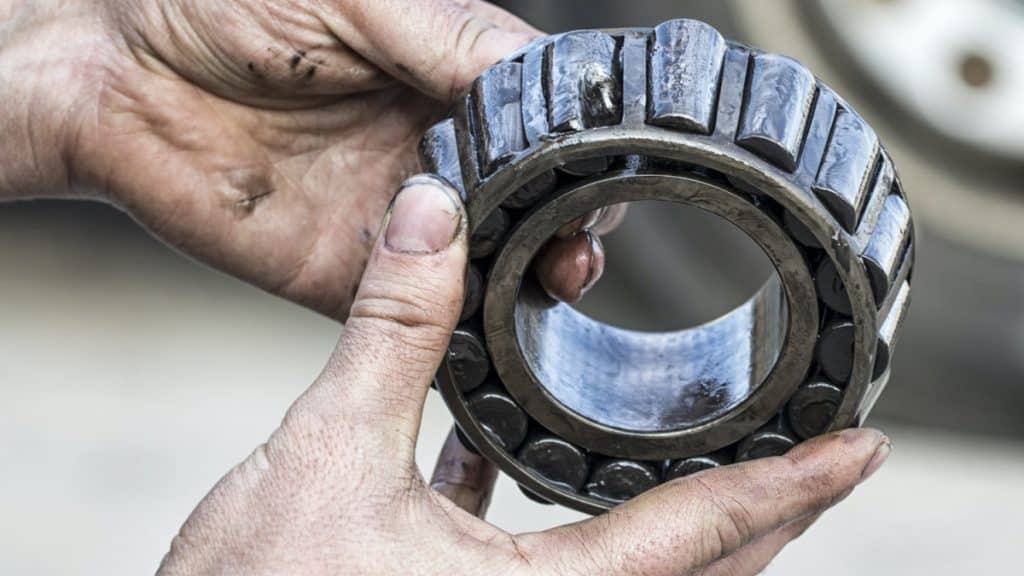Concrete grinding wheels are the workhorses of the construction industry. They perform difficult tasks like coating removal, uneven surface smoothing, and concrete preparation for additional treatment. However, even the most challenging working horse eventually needs to be replaced. How do you tell when to go with your reliable grinding wheel? Here are eight signs that it’s time to invest in a new one:
1. Reduced Grinding Performance
A discernible reduction in grinding efficiency is a surefire sign that your wheel has outlived its useful life. This can show up in several ways:
- Increased Grinding Time: To attain the exact results you used to get quickly, you need to exert more force on the grinder and spend more time on it.
- Uneven Grinding: When there is uneven grinding, the concrete may get ridges or gouges.
- Glazing: The capacity of the grinding wheel to efficiently abrade the concrete is lost when its surface gets glossy and smooth.
These issues arise because the abrasive segments on your grinding wheel have worn down. Worn segments lack the cutting power to grind concrete efficiently.
2. Excessive Vibration
The process of grinding should be seamless and under control. When your grinder begins to vibrate excessively, it may indicate many issues, such as:
- Unbalanced Wheel: The grinding wheel may become unbalanced due to uneven wear. The vibrations caused by this imbalance might be complex to deal with and degrade the grind’s quality.
- Unsecured Grinding Wheel: Verify that the grinding wheel is firmly fastened following the manufacturer’s recommendations. A loose wheel can wobble and vibrate.
- Internal Damage: In rare cases, excessive vibration might indicate internal damage within the grinding wheel. If you suspect this, discontinue use immediately and replace the wheel.
3. Visible Wear and Tear
A grinding wheel is a consumable item, and visual inspection can reveal its condition. Look for these signs of wear:
- Segment Depth Reduction: The wheel’s abrasive segments are the grinding segments. Their depth will decrease as they age. Wear indications are often incorporated into the body of the wheel. It’s time for a replacement after the segments cross the wear line.
- Cracks or Fractures: A grinding wheel with cracks could pose a safety risk. If you see any fractures or breaks, replace the wheel immediately and stop using it.
- Bond Deterioration: The bond holds the abrasive segments together. Segments may come free or separate if the bond weakens or degrades, posing a significant safety risk.
4. Sparks Instead of Grinding
Sparking is common when grinding. However, excessive sparking or a change in the spark pattern can indicate a problem:
- Inadequate Grinding: The grinding wheel is probably worn out and has to be replaced if it spins yet produces a lot of sparks while removing very little concrete.
- Improper Wheel Selection: Using the incorrect grinding wheel for the task can result in excessive sparking and reduced efficiency. Make sure the wheel you’re using is made for the particular concrete application.
5. Burning Smell
When grinding, a burning smell can indicate a number of problems:
- Overheating: When a grinding wheel wears out, it takes more effort to get the same results, which can cause both the wheel and the concrete surface to overheat. A burning smell may result from this overheating.
- Friction: Heat and a burning smell can also be produced by excessive friction between a worn-out wheel and the concrete.
6. Difficulty Maintaining Control
Precise control is possible with a grinding wheel that is operating correctly. If you’re having more trouble keeping your grip on the grinder while it’s operating, there may be one of the following reasons:
- Worn Wheel Profile: The grinding wheel’s profile varies with wear. This may make keeping a steady grinding path more difficult.
- Increased Vibration: As already indicated, too much vibration can make the grinder hard to manage.
7. Increased Noise Levels
A discernible rise in grinding noise usually suggests:
- Worn Segments: Worn segments may produce a higher-pitched grinding noise than a sharp wheel.
- Imbalanced Wheel: An imbalanced wheel may produce a chattering sound when grinding.
8. Operator Discomfort
When grinding, if you feel more tired, strained, or uncomfortable, it may indicate that:
A worn wheel is making the grinding operation take longer. This calls for more significant effort from the operator to continue grinding for extended periods. Weariness and discomfort can result from excessive vibration.
When to Replace Without Hesitation
Don’t wait for your grinding wheel to need to be replaced until all of these symptoms occur. If you discover any fractures, cracks, or signs of bond degradation, put safety first and get a new wheel installed immediately. Furthermore, replacing the concrete grinding wheel if it has been dropped or has sustained any impact damage is advisable. A compromised wheel poses a considerable danger of injury if it breaks while in use.
Tait Sales & Consulting’s Top-Quality Grinding Tools
Tait Sales & Consulting (TSC) is your one-stop shop for top-quality concrete grinding wheels and expert advice. Our experienced staff can assist you in choosing the ideal wheel for your application and ensure you have the necessary equipment to finish the job. Contact Tait Sales & Consulting right now to peruse our vast selection and benefit from our exceptional customer support. We’ll help you grind away your worries and achieve a smooth, professional finish on every project!

